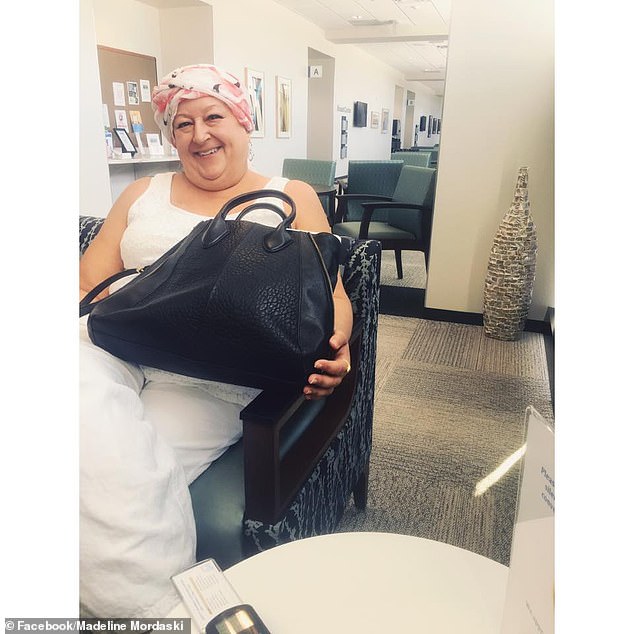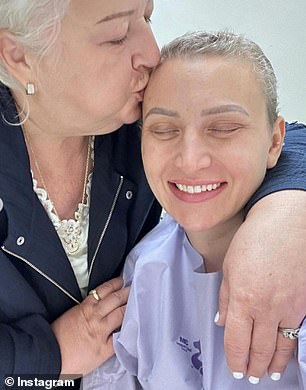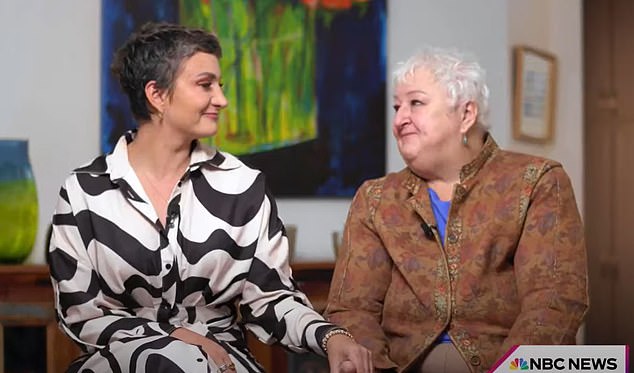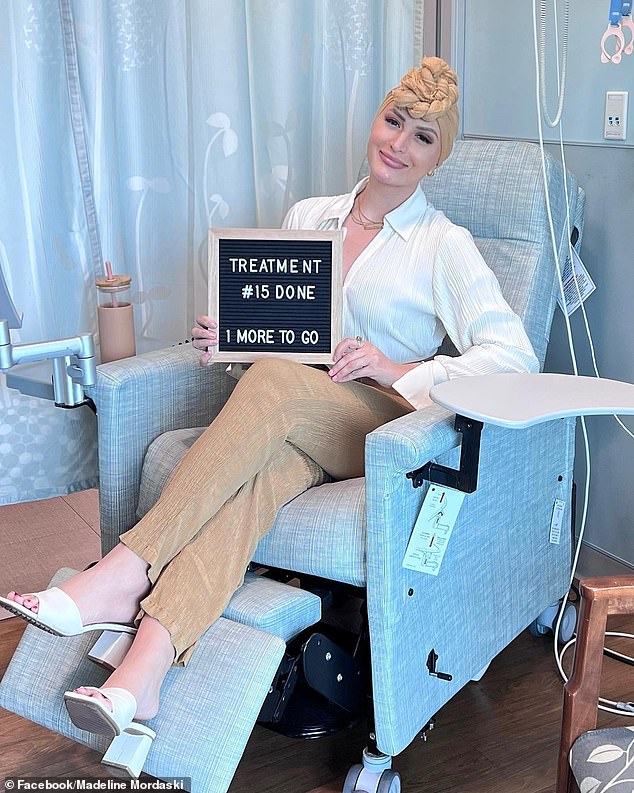Mother, 55 and daughter 25, share heartbreaking details of their JOINT breast cancer battle – as both are diagnosed within a few years of each other
One of every parent’s biggest nightmares is having their child diagnosed with cancer.
But for 63-year-old Doreen Wesley of Ohio, watching her 33-year-old daughter undergo cancer treatment was especially horrifying because she had been in the same boat just a few years earlier.
Doreen – who now lives in Florida – was diagnosed with stage 3 breast cancer in 2015 after a routine mammogram, she said during an emotional interview with Today.com.
The disease brought her closer to her daughter, Madeline, then 25, who flew 4,000 miles from her home in London to support her mother Through 16 rounds of chemotherapy, six weeks of radiation and a double mastectomy. Fortunately, Doreen was declared cancer-free within a year.
But six years later, Madeline was performing regular self-checks when she discovered a lump. Five days before her 32nd birthday, she was diagnosed with the most aggressive form of breast cancer: triple-negative breast cancer (TNBC).
Only one in ten women with this type of disease survive more than five years if the disease has already spread when it is noticed. For other forms of breast cancer this is one in three.
TNBC tends to grow and spread more quickly – and is more common in women under 40, black women and people with genetic vulnerability.
Madeline credited her mother’s illness with the crucial early detection of her disease – she carried out regular breast checks after Doreen’s diagnosis.
“The immediate feeling is denial,” Madeline said. “It’s like, ‘This can’t be happening.’ This can’t be real. And then there is the fear that sets in.’
It will come as no surprise that the hardest part of the diagnosis was breaking the news to her mother.
“I just said, Mom, come.” Madeline had recently moved Bradenton, Florida – 240 miles from her mother’s home in Miami.
Doreen said: ‘There was no doubt that I would be there and look after her as she looked after me. She is my baby.
“It was much harder to hear her diagnosis than it was to hear my own diagnosis, and that’s mainly because I knew what she was dealing with. It wasn’t an unknown…

Ms. Wesley (here) was diagnosed with stage 3 breast cancer during a routine mammogram in 2015. She underwent sixteen rounds of chemotherapy, six weeks of radiation and a double mastectomy


Mother and daughter Madeline and Doreen both traveled to care for each other while undergoing treatment for breast cancer
Like her mother, Madeline underwent sixteen rounds of chemotherapy and a double mastectomy. However, her age meant she faced other challenges.
“My mom was amazing and took care of me the entire trip,” Madeline said. “But she couldn’t understand being offered fertility options or what it’s like to be in your 30s and battling triple-negative breast cancer,” she said. Moffitt Cancer Centerwhere she and her mother were both treated.
However, Ms. Mordarski found support groups for young TNBC patients going through similar struggles, such as freezing her eggs and trying to date while battling cancer.
“I kept thinking that I’m so grateful for my life. I am so grateful for the people in my life. I am so grateful for the experiences I have had. But I’m not done yet. This can’t be it,” she said.

Madeline Mordarski (left) and her mother, Doreen Wesley, were both diagnosed with an aggressive form of breast cancer
In July, the family received news that Madeline was cancer-free, although she will continue to undergo maintenance chemotherapy until the end of the year.
“For us, hearing that she was cancer-free was probably the best news of my life,” Doreen said.
It is not clear whether the couple shared genetic traits that made them more likely to inherit breast cancer.
For example, women with mutations in the BRCA1 and BRCA2 genes – which affect Hollywood actor Angelina Jolie – can increase the risk of breast, ovarian and pancreatic cancer by as much as 85 percent.
A child of a parent with a BRCA mutation has a 50 percent chance of inheriting the gene.
Breast cancer is the most common form of cancer in both the US and the world. The National Cancer Institute (NCI) estimates there will be more than 300,000 new cases this year, along with 43,700 deaths.
Mortality rates fell by 43 percent between 1989 and 2020, following successful public health awareness campaigns, better screening and new medications. Today, nine out of ten patients are expected to survive after five years.

Madeline Mordarski underwent treatment for triple negative breast cancer in 2022 after discovering a lump during a regular breast check. She said that if her mother had not suffered from the same disease, she might not have carried out the crucial self-examination

Madeline Mordarski has been cancer-free since July. She will continue to undergo maintenance chemotherapy for the rest of the year
In May, a leading health panel recommended lowering the age at which women undergo regular breast examinations from 50 to 40, while the number of younger people developing the disease is increasing.
The U.S. Preventive Services Task Force (USPSTF) said that 20 million women in their 40s would benefit from a mammogram every two years.
Currently, all women aged 50 to 74 are advised to have a mammogram, an energy-efficient x-ray of their breasts, checked every two years.

